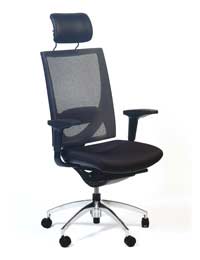Back Pain: Information for Employees
By: Suzanne Elvidge BSc (hons), MSc - Updated: 18 Sep 2012
|

People spend many hours every week at work, and what they do there, whether it is handling goods, using heavy equipment, or working at a computer all day, can have a major impact on the health their backs. Employers have a responsibility to look after their employees, but employees also have responsibilities to look after themselves too.
What Will Your Employer Do?
Employers have to carry out risk assessments of jobs and workplaces. Following these assessments, they have to make what are known as ‘reasonable’ changes to reduce the risk of injury and back pain for their employees (see ‘Back Pain: Information for Employers’).What Can You Do?
There are a number of things that employees can do to help any existing back pain and to prevent injuries leading to new cases of back pain.Employees should carefully follow any guidance and use any equipment provided by their management – doing this will help reduce existing back pain or prevent new back pain, and also help avoid any accidents. It will also help avoid putting any other employees at risk.
Manual Handling
For people involved in manual handling, it’s important to learn how to lift correctly, and to learn how to use manual handling equipment properly.Working at a Desk
Employees should learn how to make adjustments to their desks, chairs and any other equipment that will help the most with their comfort and posture (see ‘Setting Up Your Desk and Chair to Prevent Back Pain’). For people working at a desk, this could include adjusting the chair seat height and depth, the angle and height of the chair backrest, and the height of the chair arms (or removing them completely); using a footrest; and altering the height of the desk if possible.Computer Users
For computer users, the mouse and keyboard should be in easy reach and the screen should be at eye level – this avoids having to twist too much. Laptops should be plugged into a desktop keyboard and monitor if possible.Take a Break
Employees should try to break up the day (or shift) by working on different things that use different parts of the body where possible – this avoids putting too much strain on any one area. Employees should try to get up and move around every so often – at least every hour – to stretch the back and legs and rest the eyes. Breaks can also reduce stress, which can also cause or worsen back pain.Exercise
If the organisation provides access to a gym, or to exercise or fitness classes, it is a good idea to take advantage, as the correct exercises can help prevent or treat back pain.Report it
It is important for employees to report any back pain to management and to a safety representative if there is one available, and to talk to a GP. It’s also worthwhile suggesting any changes to the working environment that could help people with existing back pain or prevent the development of new back pain. An occupation health expert may be able to help with any back pain.
Related Articles in the 'Back Pain & Work' Category...
- Stem Cell Repair and Back Problems
- Ergonomic Chairs: Do They Help Back Pain?
- Back Pain: Information for Employers
- Getting Back to Work With Back Pain
- Gadgets to Help With Back Pain
- Setting Up Your Desk and Chair to Prevent Back Pain
- A Day in the Life of a Back Pain Sufferer
- Facts and Figures About Your Back
- Back Pain: Are You Sitting Comfortably?

Re: Who is at Risk of Developmental Back Pain?
I have been getting muscle spasms in my lower back for 30 years and when they occur I walk like an old man. I…
Re: A Spinal Tap Caused My Back Pain
When I was 14 I was sent to the emergency room with an illness the doctors couldn't identify. Extremely high fever and high…
Re: A Spinal Tap Caused My Back Pain
I've had spinal meningitis 7 times now. So much scar tissue they have to do x ray with the lumbar puncture. I am having a lot…
Re: A Spinal Tap Caused My Back Pain
Hello I had spinal tap done bout 8 month ago due to a brain aneurysm. I tell you someday they way my back is make me not…
Re: A Spinal Tap Caused My Back Pain
So about 7 or 8 months ago I got a spiral tap preformed due to have being diagnosed with Idiopathic intracranial…
Re: A Spinal Tap Caused My Back Pain
So about 7 or 8 months ago I got a spiral tap preformed due to have being diagnosed with Idiopathic intracranial…
Re: Dehydrated Discs
hI THERE, I have Dyhydration L3/l4 and ll4/l5 and disprotrusion and sequestrated discu after MRI i am aged 52. I had hip pain all night for 3…
Re: A Spinal Tap Caused My Back Pain
Hi . I also had a spinal Tap to check the stages of a bleeiding in my brain. This has caused me serious back pain almost…
Re: Dehydrated Discs
Alex - Your Question:I am a 27 yr old male who up until last year was working 84-108 hrs/week and always had back problems but all the doctors I…
Re: Dehydrated Discs
I am a 27 yr old male who up until last year was working 84-108 hrs/week and always had back problems but all the doctors i had seen told me its…